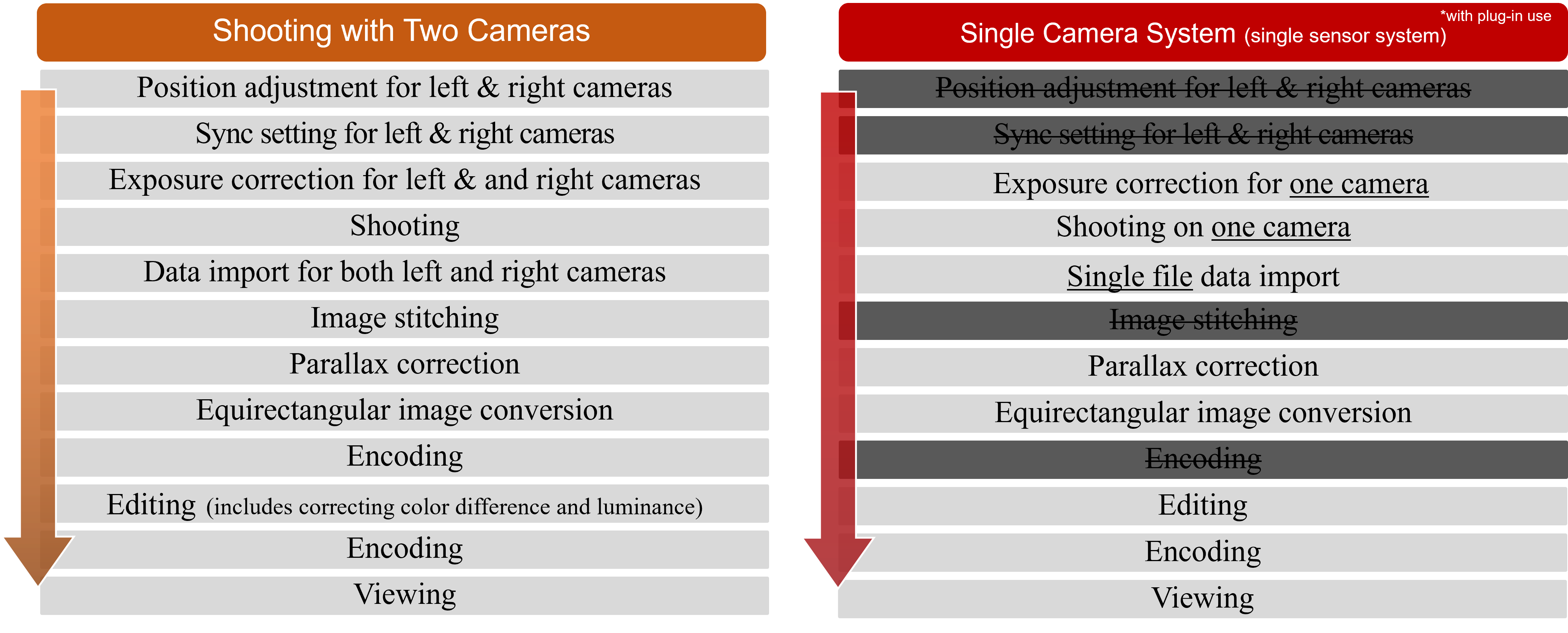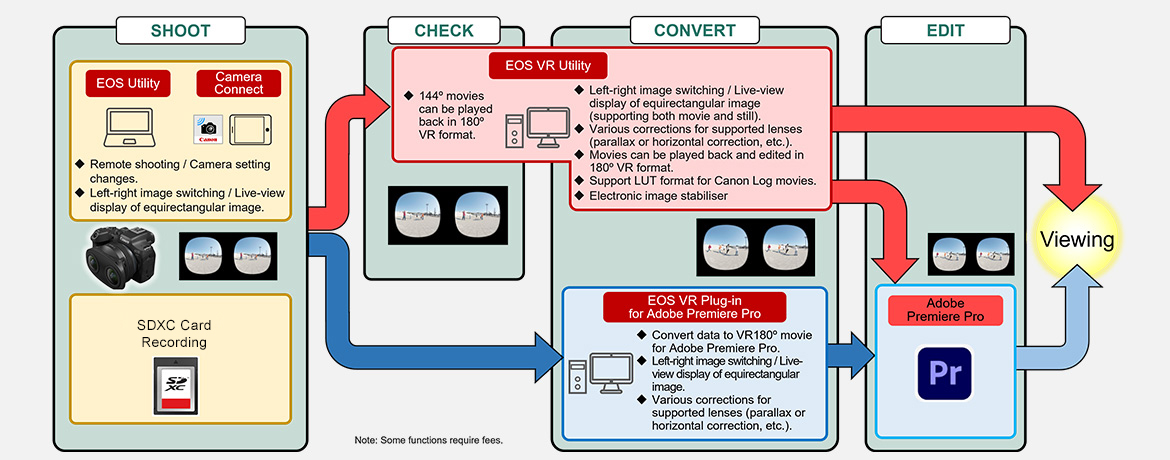The lightweight RF-S3.9mm f/3.5 STM Dual Fisheye lens with Autofocus can capture 144-degree 3D stereoscopic visuals by utilising the parallax of the left and right fisheye lenses. This design allows a single sensor to receive light from both lenses, making it easier to record Virtual Reality content with just one camera.
The RF-S3.9mm f/3.5 STM Dual Fisheye has a gear-type stepping motor (STM) that utilises a dual-lens autofocus (AF) mechanism. This mechanism synchronously controls the movement of the left and right lenses.
AF becomes just as user-friendly as using a regular RF lens. An advanced microprocessor optimises the actuator control to align with the camera's AF algorithm, resulting in fast and accurate autofocus.
The RF-S3.9mm f/3.5 STM Dual Fisheye has an actuator that can independently drive only the right lens.
This enables the relative focus of the left and right lenses to be adjusted using the left-right focus difference adjustment mode switch and the focusing/control ring.
Mechanism of Virtual Reality Recording

Conventional VR recording requires aligning two cameras and syncing camera positions, with additional processes like colour matching and stitching required after shooting. The RF-S3.9mm f/3.5 STM Dual Fisheye and EOS R7 have a single-sensor recording capability, eliminating such hassles.
A More Efficient Workflow

The RF-S3.9mm f/3.5 STM Dual Fisheye enables recording on a single camera with one CMOS image sensor, thereby eliminating certain stages from the workflow that were previously necessary with a two-camera system, such as aligning the positions and synchronising the settings of the left and right cameras before the shoot, or the need to stitch images in post-production.
Software Integration for Post-Production

EOS VR Utility*
EOS VR Plugin* for Adobe Premiere Pro
*subscription fee and/or payment required for full feature (conversion of footage that are 2 minutes or longer).
*does not support Apple Silicon yet.
This sample video was shot on the RF-S3.9mm f/3.5 STM Dual Fisheye and EOS R7, and output as a 2D VR video so you don’t need 3D goggles to experience it. You can use your mouse, keyboard, or touch gestures to move around the scene, zoom in, or zoom out.
The EOS VR SYSTEM enables users to use compatible cameras, lenses and image processing software to explore 180° Stereoscopic VR (Virtual Reality) videos and images.
Advanced User Guide and Instruction Manual available for download.
*Multiple Exposure mode compatibility, please refer here.
*Source for instruction manuals and software for EOS, EOS accessories, lenses, PowerShot, SELPHY and professional video products in various supported languages.
https://cam.start.canon/